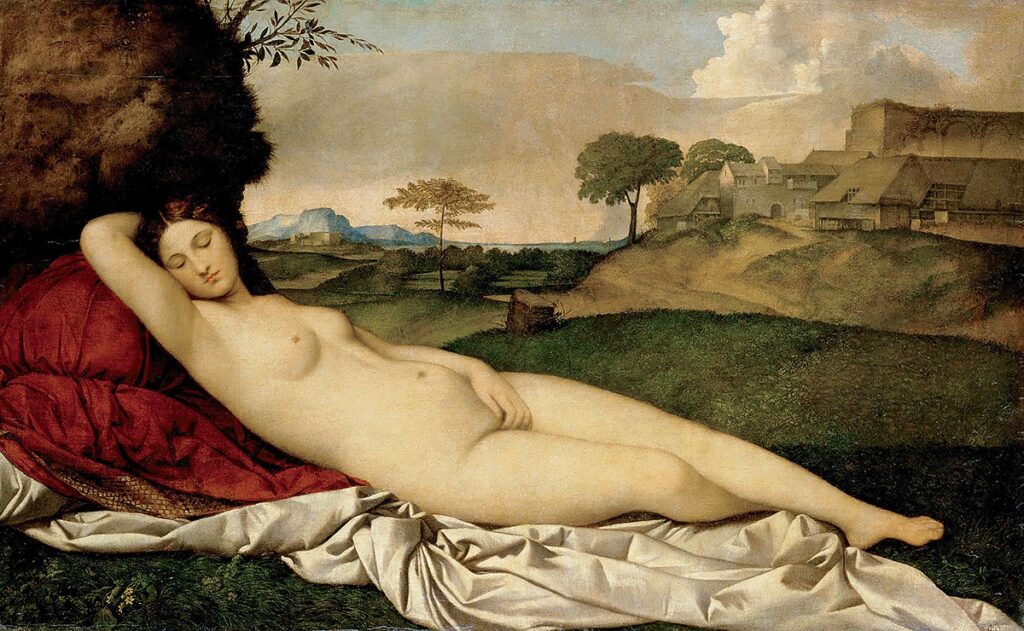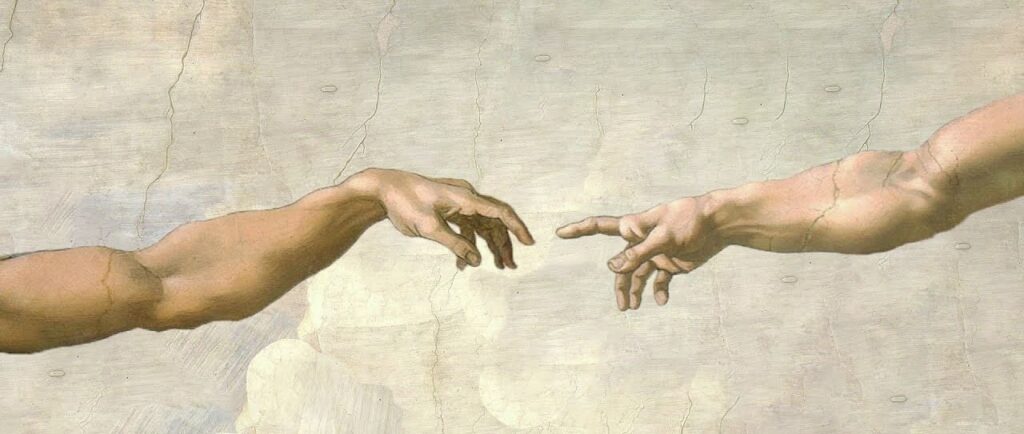During the Renaissance, a period of cultural and artistic rebirth in Europe from the 14th to the 17th century, art flourished in unprecedented ways. This blog post explores the factors that led to the emergence and development of Renaissance Art during this transformative period.
By examining the social, political, and economic conditions and the intellectual and cultural movements that shaped the Renaissance, we can better understand why art became such a prominent and influential aspect of this era.
Factors that led to Art during the Renaissance
During the Renaissance, several factors contributed to the emergence and development of art.
Firstly, economic prosperity played a significant role. The rise of wealthy merchant classes created a new class of patrons with the financial means to support artists. These affluent individuals and families became patrons of the arts, commissioning artworks and providing financial support to artists. The increasing demand for art as a status symbol further fueled the growth of artistic production during this period.
The intellectual and cultural movements of the Renaissance also played a crucial role in promoting art. A renewed interest in the classical cultures of ancient Greece and Rome characterizes the Renaissance. This intellectual awakening led to a shift in artistic style and subject matter, with artists drawing inspiration from classical mythology, literature, and philosophy. The Humanist movement, which emphasizes the importance of human potential and achievement, also influenced artistic expression during the Renaissance Art period.
The social and political conditions of the Renaissance also contributed to the flourishing of art. The stability and relative peace in many parts of Europe allowed artists to focus on their craft without the constant threat of war or political instability. The patronage of powerful rulers, such as the Medici family in Florence or the papacy in Rome, gave artists the resources and support they needed to create masterpieces.
Exploring Themes in Renaissance Art
Renaissance art was characterized by various themes that reflected the cultural and intellectual movements of the time. Here are some common themes found in Renaissance paintings and frescoes.
- Religious and Biblical Themes: Many Renaissance artists were commissioned by the Church, The Papacy, and often Royalty to create Religious Paintings to glorify God and themselves. Biblical stories and figures, such as the Madonna and Child, the Last Supper, and the Crucifixion, were popular themes.
- Mythological Themes: Inspired by the renewed interest in classical cultures, Renaissance artists often depicted scenes from Greek and Roman mythology. These artworks showcased mythical gods, goddesses, and heroes, such as Venus, Apollo, and Hercules.
- Portraiture: Portraits became increasingly popular during the Renaissance. Artists aimed to capture the likeness and personality of their subjects, often depicting individuals from the wealthy and influential classes.
- Humanism: The Humanist movement artists began to portray the human figure in a more realistic and idealized manner, focusing on anatomical accuracy and expressing human emotion and personality.
- Nature and Landscapes: Renaissance artists incorporated natural elements and landscapes into their oil paintings. They observed and depicted nature with a newfound scientific curiosity, aiming for realistic representation.
- Allegorical Themes: Allegorical artworks were common during the Renaissance, using symbolic representations to convey deeper meanings. These paintings often gave moral, philosophical, or political messages.
By exploring these themes, we can better understand the artistic expressions during the Renaissance period.
Religious and Spiritual Influences on Renaissance Paintings
Religious and spiritual influences played a significant role in the development of art during the Renaissance. The Catholic Church, in particular, had a considerable impact as a patron of the arts. The Church commissioned numerous works of art to promote religious devotion and reinforce its authority. Artists were often commissioned to create paintings, sculptures, and other forms of art that depicted religious themes or figures.
The Protestant Reformation also had an impact on Renaissance art. As a result of the Reformation, artists sought to express their interpretations of religious themes and challenge traditional religious institutions. This led to a greater emphasis on individual creativity and artistic expression.
Overall, religious and spiritual influences during the Renaissance significantly shaped the art of some of the world’s most famous artists. Renaissance paintings created during this period continue to be celebrated and admired today.
Famous Italian Renaissance Artists
During the Renaissance, religious themes were a prominent subject in art. Many famous religious paintings from this period have had a significant impact on the development of Western art. Several famous artists made substantial contributions to the art world. Some of these include:
- Leonardo da Vinci is known for his diverse talents. He was a master painter, sculptor, architect, and inventor. In addition to The Last Supper, he is famous for the Mona Lisa painting.The Last Supper by Leonardo da Vinci is an iconic painting depicting Jesus’s final meal with his disciples before his crucifixion. It is known for its intricate details and composition.
- Michelangelo was a renowned sculptor, painter, and architect. Apart from The Creation of Adam, Michaelangelo is widely recognized for his masterpiece, the ceiling frescoes in the Sistine Chapel.The Creation of Adam by Michelangelo fresco is located on the ceiling of the Sistine Chapel in the Vatican. It portrays the biblical story of the creation of Adam, with God reaching out to give life to the first man.
- Raphael was an Italian painter and architect best known for his work in the Vatican’s Apostolic Palace, including The School of Athens. He was known for his graceful style and use of vibrant colors.The School of Athens by Raphael is part of a series of frescoes in the Vatican’s Apostolic Palace. It depicts a gathering of ancient Greek philosophers and represents the pursuit of knowledge and wisdom.
- Giorgione was an influential Venetian painter known for using color and atmospheric landscapes. One of his most famous nude paintings is The Sleeping Venus. The Tempest by Giorgione is an enigmatic painting known for its mysterious atmosphere and ambiguous narrative.

- Sandro Botticelli: Botticelli was an Italian painter celebrated for his mythological and allegorical paintings. In addition to The Birth of Venus, his other notable works include Primavera and The Adoration of the Magi.The Birth of Venus by Sandro Botticelli: Although not strictly a religious painting, it incorporates mythological elements and symbolizes the divine beauty of the goddess Venus. It is considered one of the masterpieces of the Renaissance art period.
These famous Renaissance artists, along with many others, played a crucial role in shaping the art of the Renaissance period. Their artworks reflect the cultural and intellectual developments of the time.
These are just a few examples of famous religious Renaissance paintings during a period rich in artistic expression, and artists explored many religious themes.
The Sistine Chapel Religious Paintings
During the Renaissance, religious themes played a significant role in the art of that period. One of the most famous examples of religious Renaissance paintings is in the Sistine Chapel in the Vatican. The Sistine Chapel is adorned with a series of magnificent frescoes painted by renowned artist Michelangelo.
The Creation of Adam is one of the most famous frescoes in the Sistine Chapel. This painting depicts the biblical story of the creation of Adam, with God reaching out to give life to the first man. The image has become an iconic representation of this biblical event and is known for its intricate details and composition.
In addition to The Creation of Adam, the Sistine Chapel also features other religious frescoes by Michelangelo, including The Last Judgment, which depicts the second coming of Christ and the final judgment of souls.
Touching the Hand of God is a detail from the Creation of Adam. It is one of our most popular reproduction oil paintings.
These religious paintings in the Sistine Chapel are considered masterpieces of Renaissance art and have profoundly influenced future artistic movements. The level of detail, skill, and emotional depth in these paintings set a new standard for artists of later generations.
It’s worth noting that the Sistine Chapel is not the only place to find religious Renaissance paintings. Many other European churches and cathedrals also house remarkable examples of religious art from this period.
What are the 10 Most Famous Renaissance Paintings
The Renaissance was a period of immense artistic growth and innovation, and it produced some of the most famous paintings in art history. Here are 10 of the most famous paintings from the Renaissance:
- Mona Lisa by Leonardo da Vinci: This iconic painting is known for its enigmatic smile and is considered one of the greatest masterpieces ever.
- The Last Supper by Leonardo da Vinci: This monumental fresco depicts the biblical scene of Jesus and his disciples at the Last Supper.
- The Creation of Adam by Michelangelo: Found on the ceiling of the Sistine Chapel, this painting is part of a more extensive series depicting scenes from the Book of Genesis.
- The School of Athens by Raphael: This fresco portrays a gathering of ancient Greek philosophers and is known for its composition and depiction of famous thinkers.
- The Birth of Venus by Sandro Botticelli: This painting depicts the goddess Venus emerging from the sea and is celebrated for its beauty and grace.
- The Sistine Chapel Ceiling by Michelangelo: This extensive fresco cycle covers the entire ceiling of the Sistine Chapel and includes several iconic scenes, including the Creation of Adam.
- Primavera by Sandro Botticelli: This allegorical painting represents the arrival of spring and is characterized by its vibrant colors and mythological figures.
- The Last Judgment by Michelangelo: Located on the altar wall of the Sistine Chapel, this monumental fresco depicts the second coming of Christ and the final judgment of souls.
- The Annunciation by Leonardo da Vinci: This painting portrays the biblical scene of the angel Gabriel announcing to the Virgin Mary that she will conceive the Son of God.
- The Tempest by Giorgione: This enigmatic painting is known for its mysterious atmosphere and ambiguous narrative.
These paintings are just a glimpse of the rich artistic heritage of the Renaissance. They showcase the technical skill, creativity, and intellectual depth of the artists of that time.
The Renaissance was a period of immense artistic growth and innovation, driven by a combination of economic prosperity, intellectual curiosity, technological advancements, political stability, and religious influences.
The impact of art during this time extended beyond aesthetics, shaping cultural and intellectual exchange, influencing future artistic movements, and leaving a lasting legacy in the history of art.
By understanding the factors that led to art during the Renaissance, we can appreciate the significance of this period and its enduring influence on the art world.


Leave a Reply
You must belogged in to post a comment.